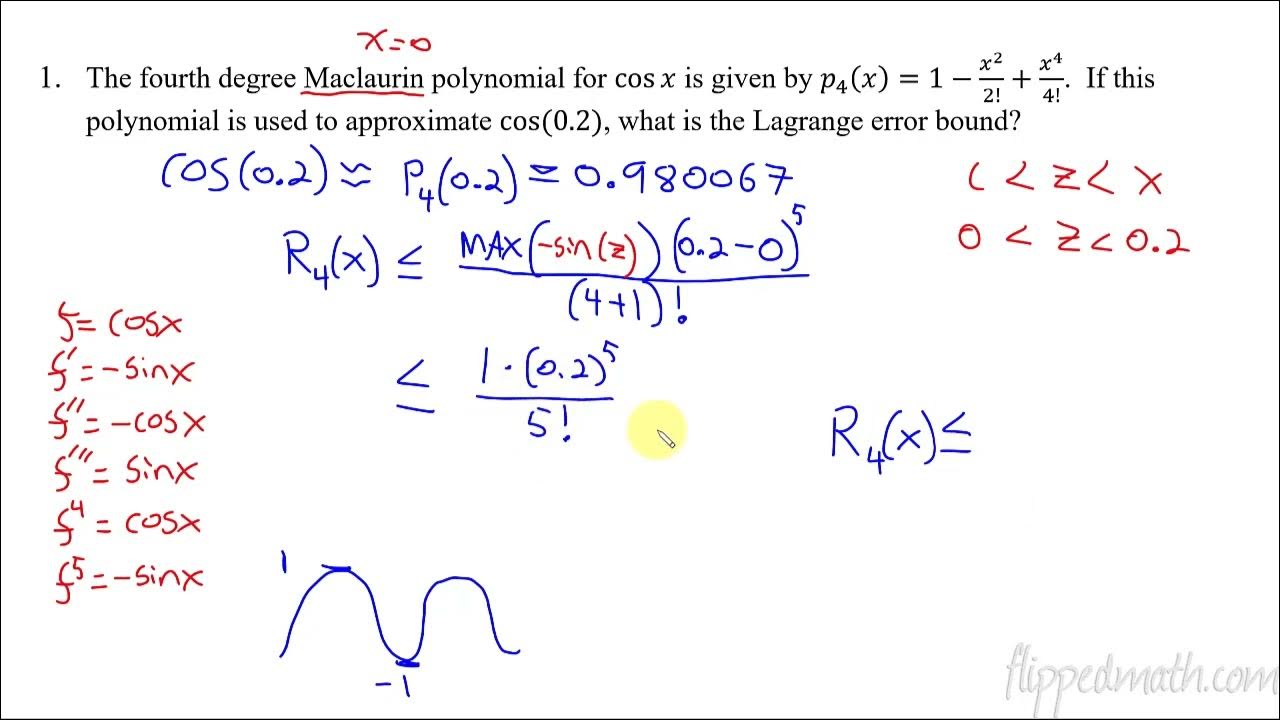Lagrange Error Bound

Whether approximating values or evaluating functions, mathematicians have devised various techniques to ensure accuracy. One such technique, often employed when dealing with series expansions, is the Lagrange Error Bound. This mathematical tool provides invaluable insight into the accuracy of approximations, shedding light on the limits of approximation errors. In this article, we delve into the intricacies of the Lagrange Error Bound, exploring its conceptual foundation, application, and significance in calculus.
The Foundation of the Lagrange Error Bound:
Named after the eminent mathematician Joseph-Louis Lagrange, the Lagrange Error Bound is rooted in Taylor’s theorem. Taylor’s theorem states that any sufficiently smooth function can be approximated by a polynomial, known as its Taylor polynomial, around a chosen point. This polynomial expansion serves as an approximation of the function within a specified interval.
The Lagrange Error Bound, a corollary of Taylor’s theorem, provides an upper bound on the absolute error between the true value of a function and its Taylor polynomial approximation. It quantifies the discrepancy between the actual function and its polynomial approximation, offering a measure of the approximation’s accuracy.
The Expression of the Lagrange Error Bound:
Formally, the Lagrange Error Bound can be expressed as follows:
∣��(�)∣≤�(�+1)!∣�−�∣�+1
Where:
- ��(�) denotes the remainder or error term in the Taylor polynomial approximation.
- � represents an upper bound for the �+1 derivative of the function within the interval.
- � is the center point of the approximation.
- � is the point at which the error is being evaluated.
- � signifies the degree of the Taylor polynomial.
This bound elucidates that the absolute error is bounded by a function of the �+1 derivative of the function, scaled by the �+1 power of the distance between � and �.
Application of the Lagrange Error Bound:
The Lagrange Error Bound finds wide-ranging applications across various domains of calculus, particularly in numerical analysis, engineering, and physics. One common application is in estimating truncation errors when approximating functions using finite series expansions. For instance, when using Taylor series to approximate trigonometric functions or exponential functions, the Lagrange Error Bound helps ascertain the accuracy of the approximation within a given interval.
Moreover, in numerical methods such as numerical integration and root-finding algorithms, understanding the error bounds is crucial for determining the reliability of computed results. By incorporating the Lagrange Error Bound, mathematicians and scientists can assess the precision of numerical approximations and make informed decisions regarding their utility and reliability.
Significance and Implications:
The significance of the Lagrange Error Bound lies in its ability to provide a rigorous framework for assessing approximation errors in calculus. By quantifying the maximum error of an approximation, it enables mathematicians and scientists to gauge the reliability of their computations and make informed decisions regarding the validity of results.
Furthermore, the Lagrange Error Bound underscores the importance of understanding the limitations inherent in any mathematical approximation. It reminds practitioners that while Taylor polynomials offer valuable insights into the behavior of functions, they are ultimately finite approximations that may deviate from the true function beyond a certain point.
Conclusion:
The Lagrange Error Bound stands as a powerful tool in the arsenal of mathematicians and scientists, offering a systematic approach to quantifying approximation errors in calculus. Its foundation in Taylor’s theorem provides a robust theoretical framework for understanding and analyzing the accuracy of polynomial approximations. Through its application, the Lagrange Error Bound illuminates the intricacies of approximation theory, guiding the development of numerical methods and enhancing the precision of mathematical computations. As calculus continues to evolve, the Lagrange Error Bound remains a cornerstone concept, indispensable for ensuring accuracy and reliability in mathematical analysis.





